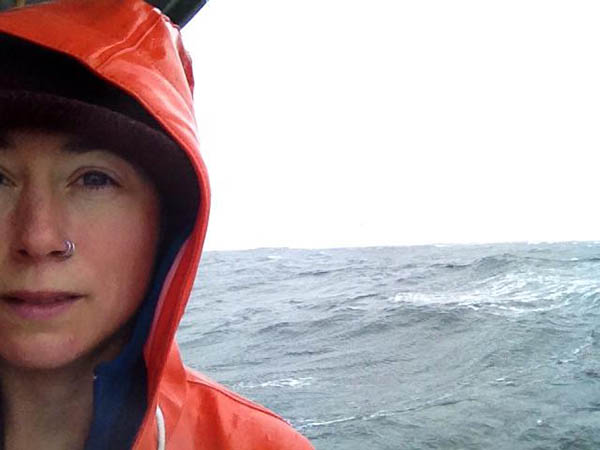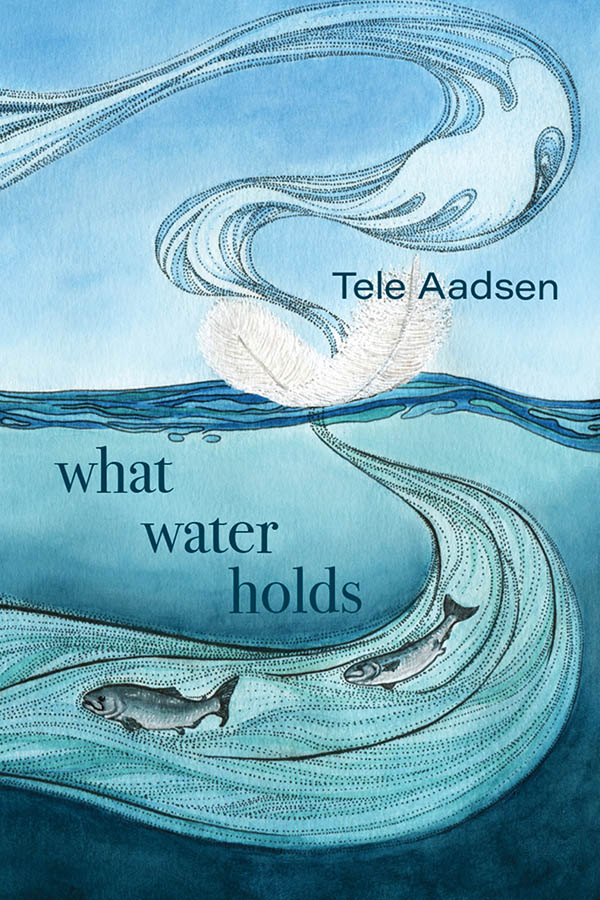We’re somewhere in the Southeast Gulf of Alaska right now, in the midst of our king salmon opening, so here’s a story from my May halibut fishing, brought to you by WordPress’s great scheduled-publishing option. “Going Green” was originally published May 19th on www.alaskawaypoints.com, in my column, “Southeast, Variable.” This post has been slightly changed from the original.
Sunshine embraces a deep swell as we drift on our designated spot. We couldn’t ask for a better day to start this season’s first halibut trip, but the anticipation Martin and I feel is tempered with the anxiety of training Ross, a first-time longline deckhand.
We huddle up in the Charity’s cabin to discuss our game plan. We both have the historical perspective to appreciate how much easier our longlining experience is compared to the derby days, when halibut fishing was a free-for-all frenzy, 48- to 96-hour openings where you didn’t sleep, eat, or stop until it closed. Compared to those days of lost boats and broken bodies, we’ve got it easy under today’s Individual Fishing Quota (IFQ) program. But we don’t talk about that. Deliberately severe, our tone is designed to convey this fishery’s gravity and risk to someone whose experience is limited to a couple troll seasons. Parrot-like, we repeat, “Longlining is a different animal.”
Martin and I will snap on all of the gear, but I hand out sheathed red Vicky knives for everyone to wear at their waist. “If you ever get hooked, cut the gangion, not the groundline. If you cut the groundline and it’s the side that’s connecting you to the boat, that’s it – we can’t get you back until it’s too late.”
Without a drum on board, we set from 55-gallon Rubbermaid tubs. Each tub contains one skate, 300 fathoms – 1800 feet – of coiled line. We have 16 skates on board, and will put out 2 sets, 8 skates each. No old salt knot-tying skills required; Martin has spliced stainless quick links into the ends of all our skates. Ross will connect and monitor the line going out, so we put on our serious voices to discuss this job.
“Always, ALWAYS clip the bottom of the first skate to the top of the second, and so on. Double and triple check your work. This is beyond critical.”
Several moments later, Ross revisits this, a concerned furrow forging his brow. “What happens if, despite my best efforts, I hook them up the wrong way?”
The detailed answer involves explaining that we’ll suddenly have 1800 feet of line flying overboard in one massive, disastrous snarl, but our captain has a more succinct response, punctuated with a long, flat stare: “We’re fucked.”
****
Over the years, I’ve played deckboss on several friends’ boats. You’d think 7 years as a social worker might influence my training tactics, that I’d approach green crew with patient explanations, nonjudgmental correction, and empathy for the overwhelmingly foreign world they suddenly find themselves in. You’d be wrong. I’m a very good deckhand, but a terrible teacher. Though the guys I’ve trained all became strong, competent crewmen, they had an unnecessarily hard, demanding classroom under my tutelage. Full of unfair expectations, I want to see things done Just So, and I want them done yesterday. I want alert eyes and quick hands, a clear mind that is obviously tracking what’s going on, a coworker who will observe how something’s done and then do it that way himself.
I might as well be compiling a wish list for an ocean-going Mary Poppins, with such impossibly unreasonable criteria for what makes a good crewmate, and have periodically shaken my head in self-disgust. Seriously, Tele? Does it really matter if he does it this way, instead of that? But moments of self-awareness don’t equate behavior change, and I suspect Ross is in for a steep learning curve.
****
For today’s training purposes, we put out only one set of 8 skates. “Makes my productivity sense twitch, but this is the right way to do it,” Martin sighs. As the saying goes, the only thing worse than not getting ‘em is getting ‘em, and if we set all 16 skates, Murphy’s Law would surely guarantee that we’d land on a major smash with one crewman who’s never cleaned a halibut.
In spite of the anxiety, setting goes smoothly. Covetous albatross croak hoarse complaints as baited hooks sink quickly out of sight and our bird avoidance gear streams parallel to the outgoing gear. Ross takes to his job quickly, calling warnings to us whenever the end of a skate approaches. The tension coiled in my belly loosens as I toss the flagpole overboard. “We’re fishin’!”
Cleared of tubs of gear and baited hooks, the deck sprawls like a skating rink. Slippery like one, too: Ross and I scrub the sheen of pollock oil and hose off smeared humpy guts, to the muttered delight of the fulmars treading water right beneath our scuppers, gobbling each morsel that flushes overboard. When everything has been properly set up for hauling (indeed, Just So), I give one final, critical survey. It passes, so raingear is peeled off and hung back up.
Martin shuts down the engine and says, “We’ll reconvene in 3 hours, have some lunch, then start hauling.” Bright sun paints the cabin walls, but we immediately head for our bunks, preparing for the intense go-go-go pace that’s just ahead. Before I can wonder too much about what our first set will bring, the sounds of water lapping at the hull next to my head and the hen-like clucking of seabirds lullaby me to a sound sleep.





Wow. What an adventure.
PS I watched ‘Snow Cake’ and reviewed it this week. What a great recommendation. Thanks for that.
My sons are small-boat halibuters. I think they will enjoy this, will pass on. NM
Please do, Nancy! Hope it rings true for them, too.